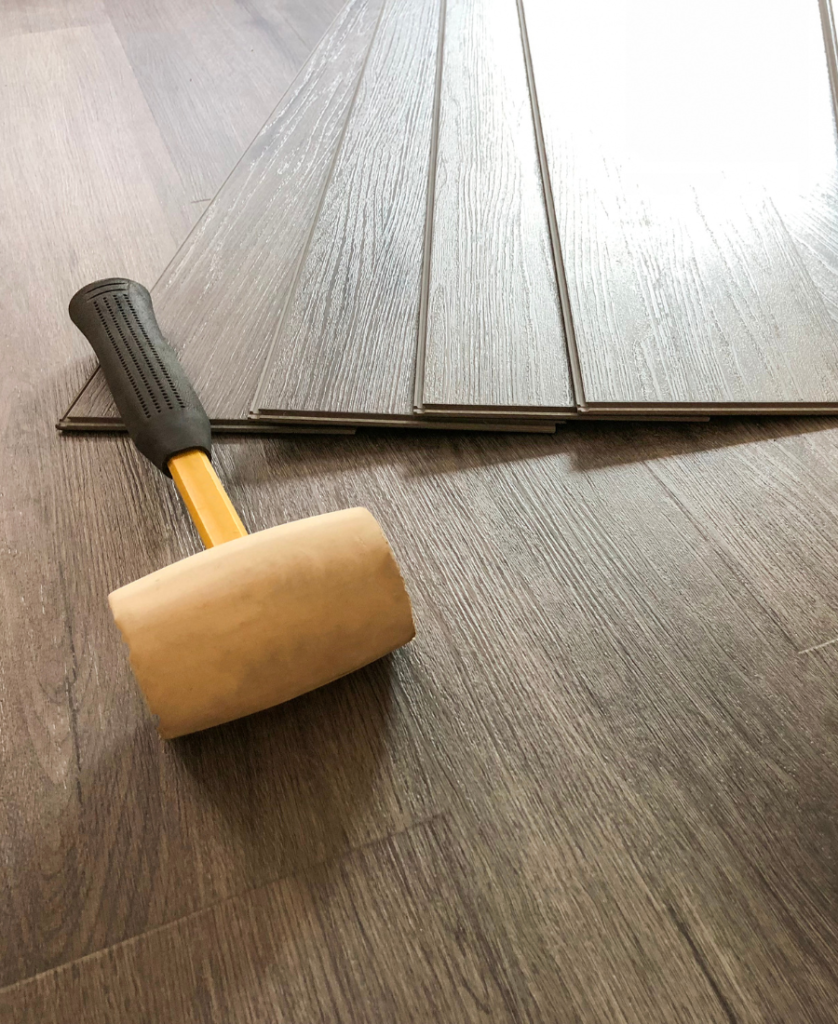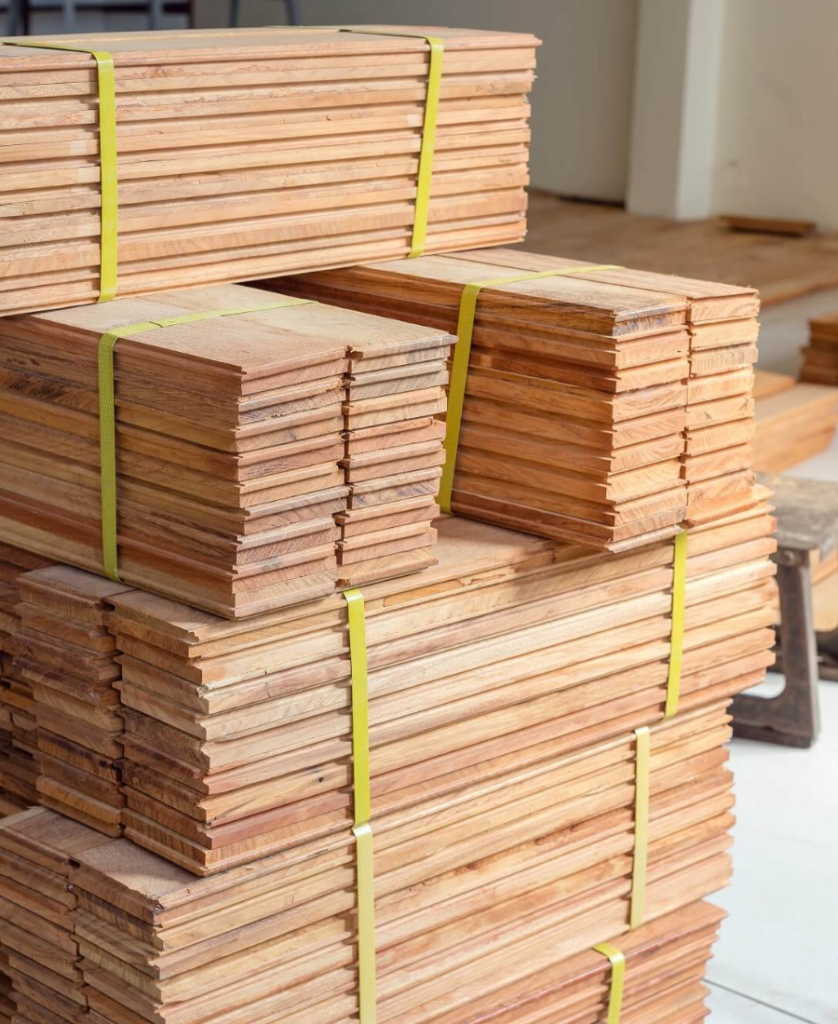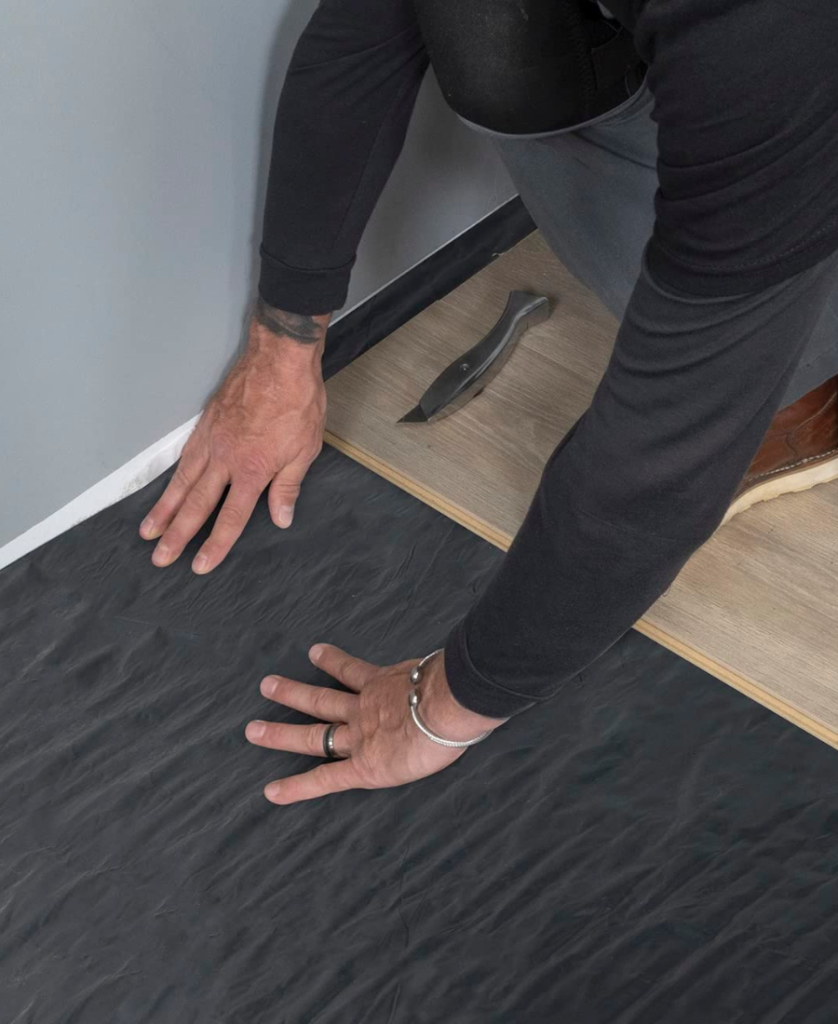In the realm of commercial construction and design, the flooring you choose plays a pivotal role in creating a lasting impression. Whether you’re working on an office space, retail outlet, or hospitality venue, selecting the right flooring material is crucial for both aesthetics and functionality. In this comprehensive guide, we’ll explore the key considerations for contractors when it comes to flooring options, with a focus on engineered hardwood, vinyl, and laminate – three versatile choices that cater to the diverse needs of commercial spaces.
Engineered Hardwood: A Touch of Elegance
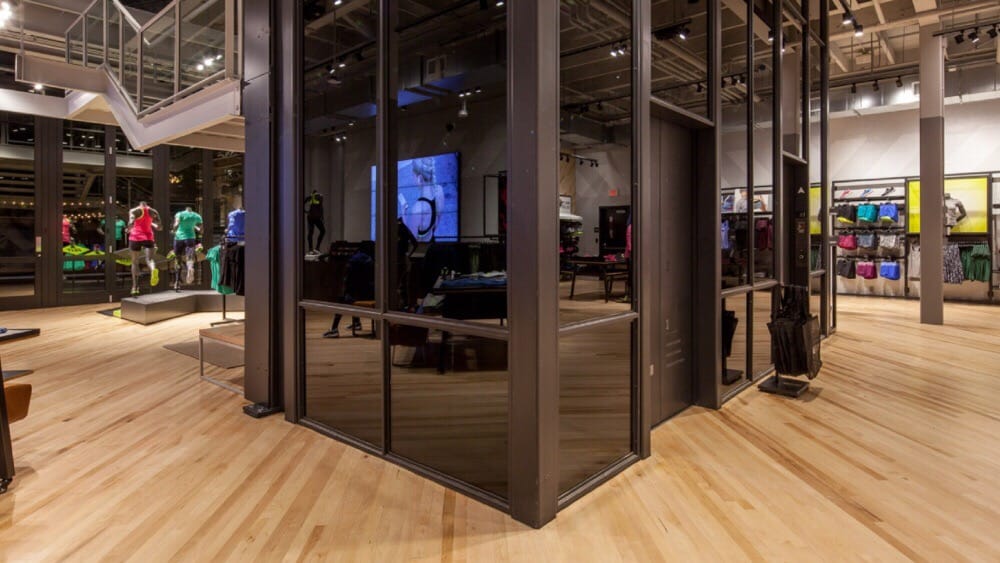
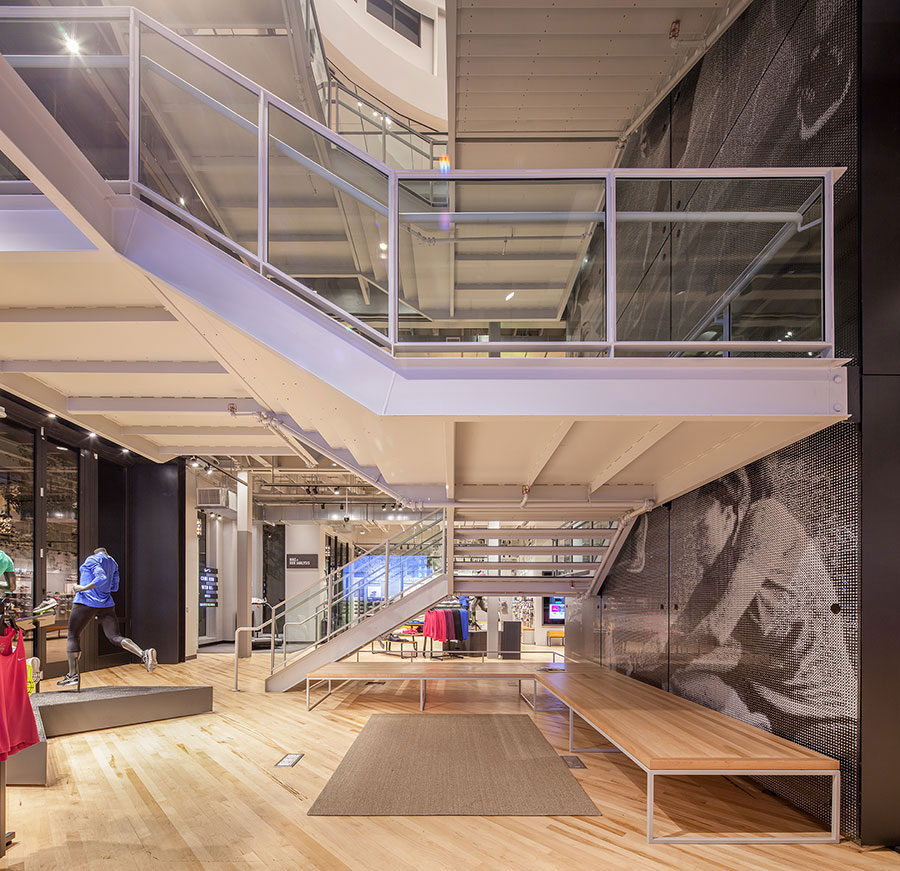
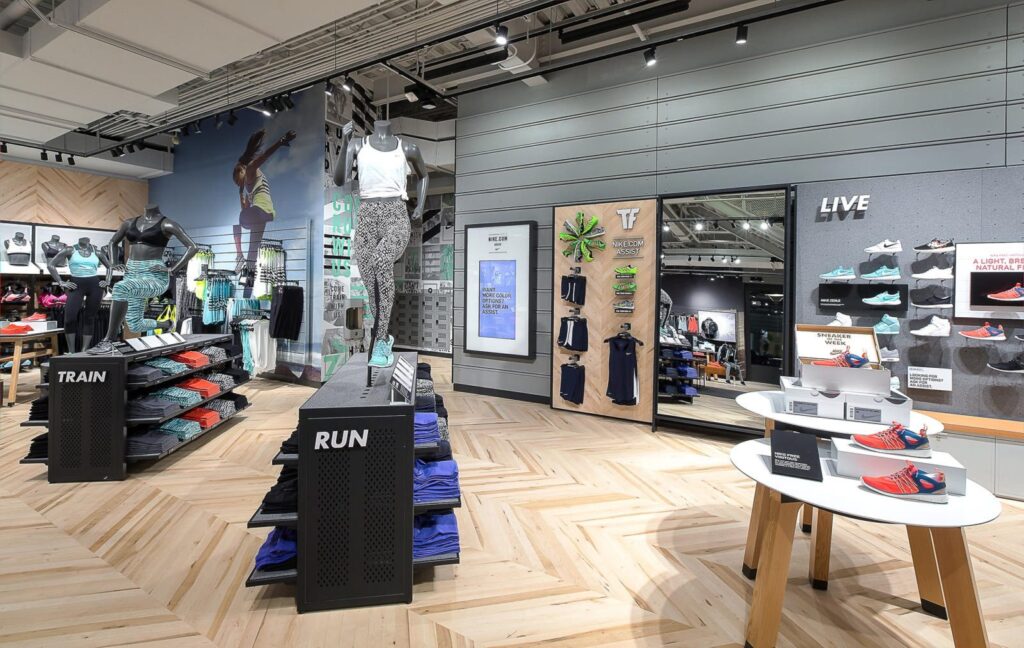
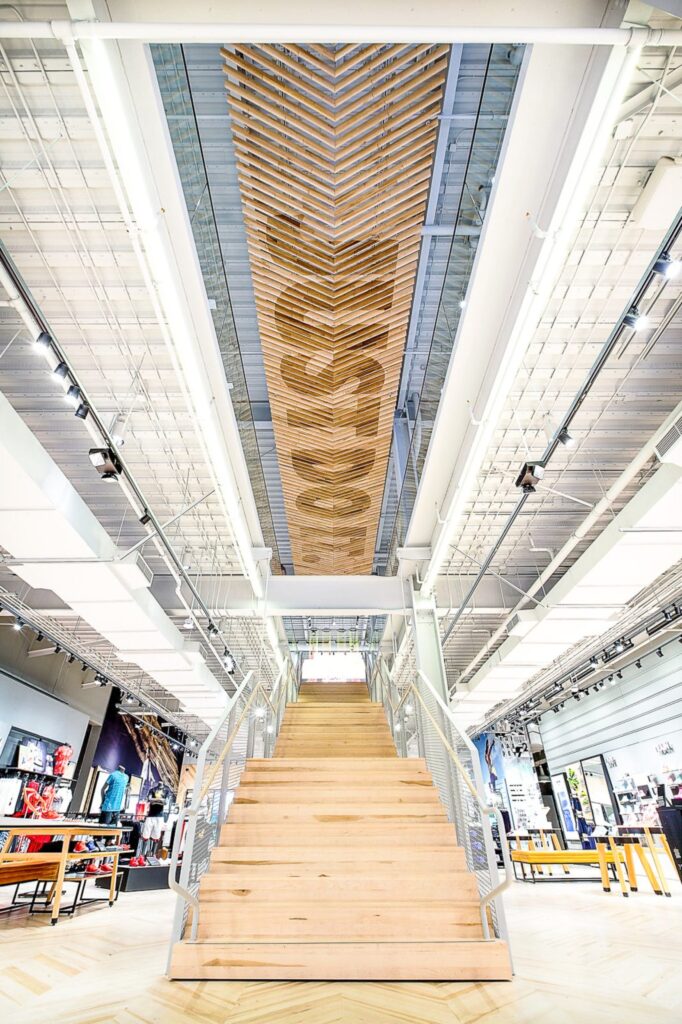
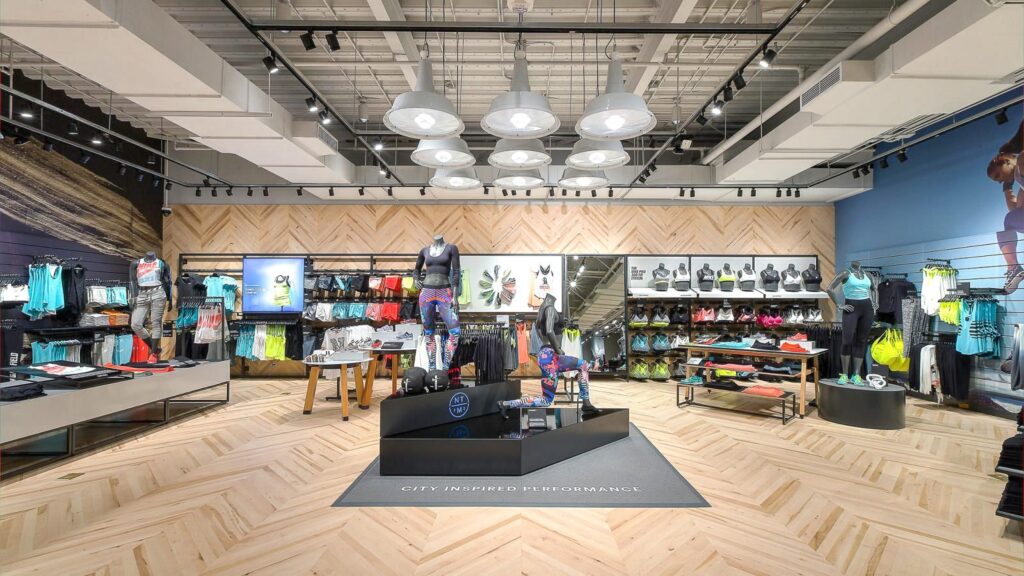
Engineered hardwood flooring brings a touch of sophistication to commercial spaces. With a top layer of a desired wood species and an inner core of plywood beneath, it provides the aesthetic appeal of hardwood with added durability. This flooring option is ideal for spaces that demand a classic and upscale appearance, such as executive offices, high-end retail stores, or upscale restaurants. Its versatility, moisture resistance, and easy maintenance make it a top choice for commercial contractors aiming to strike the perfect balance between style and functionality.
Project Highlight: Nike’s Santa Monica location, spanning two stories and 20,000 square feet, features the distinctive Chevron-patterned Crystal Valley Maple Natural (Amber) Flooring, carefully chosen by designers to complement the unique aesthetic of the space while meeting the specific requirements of this high-traffic environment.
Vinyl: Durability Meets Design
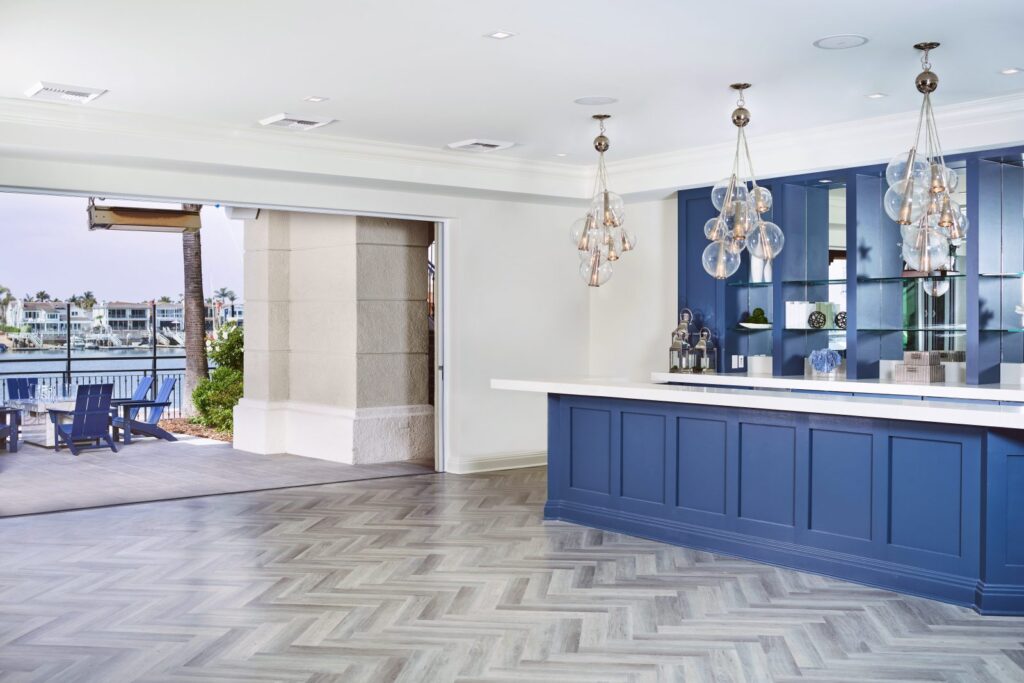
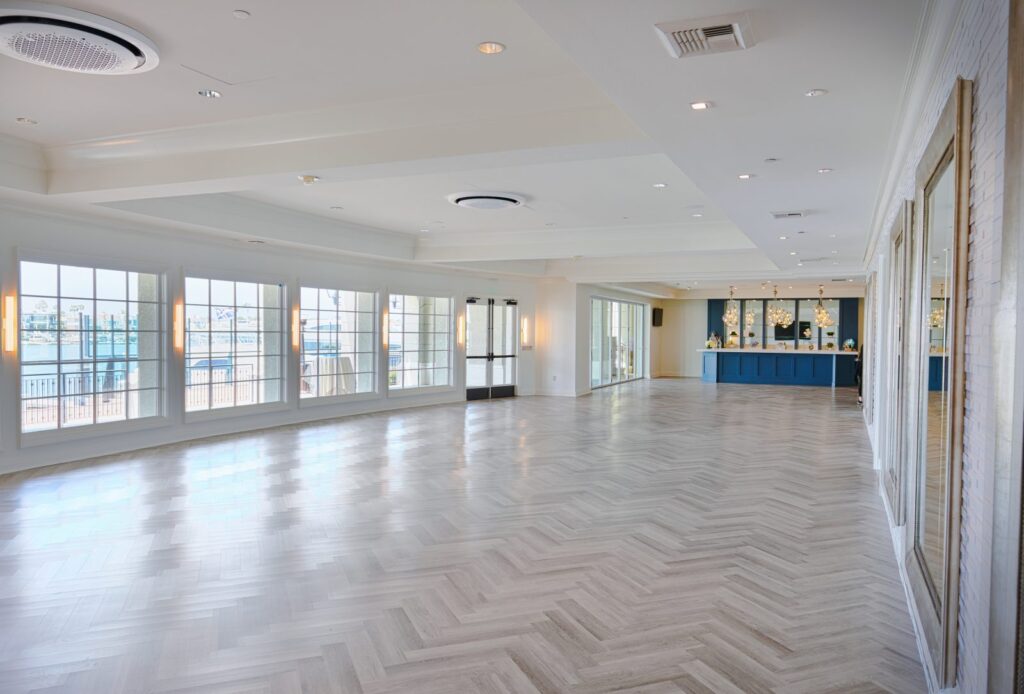
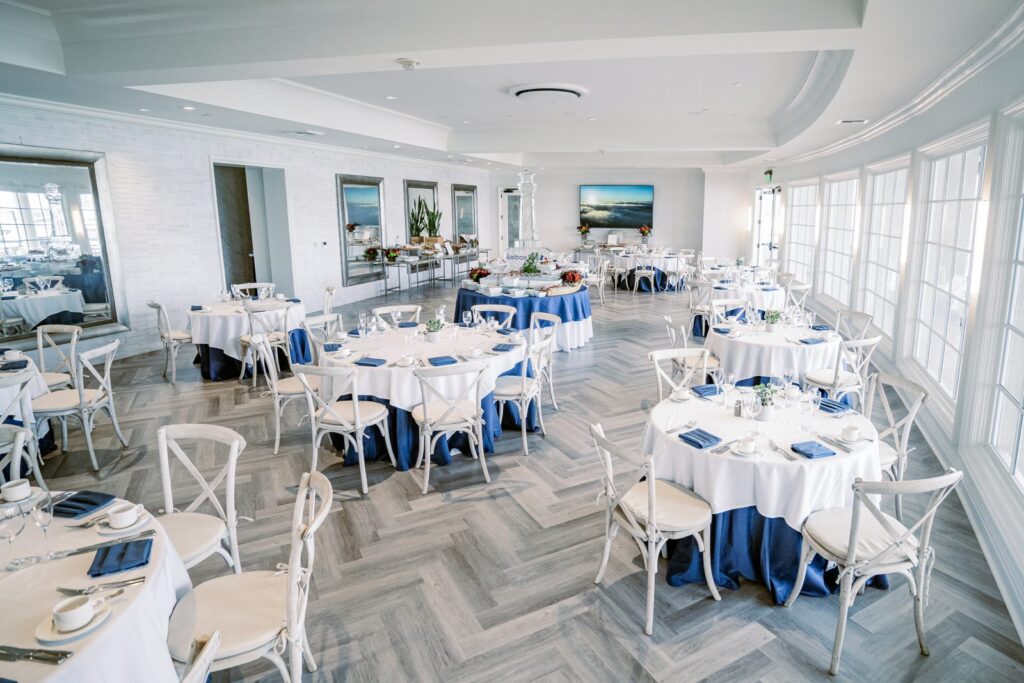
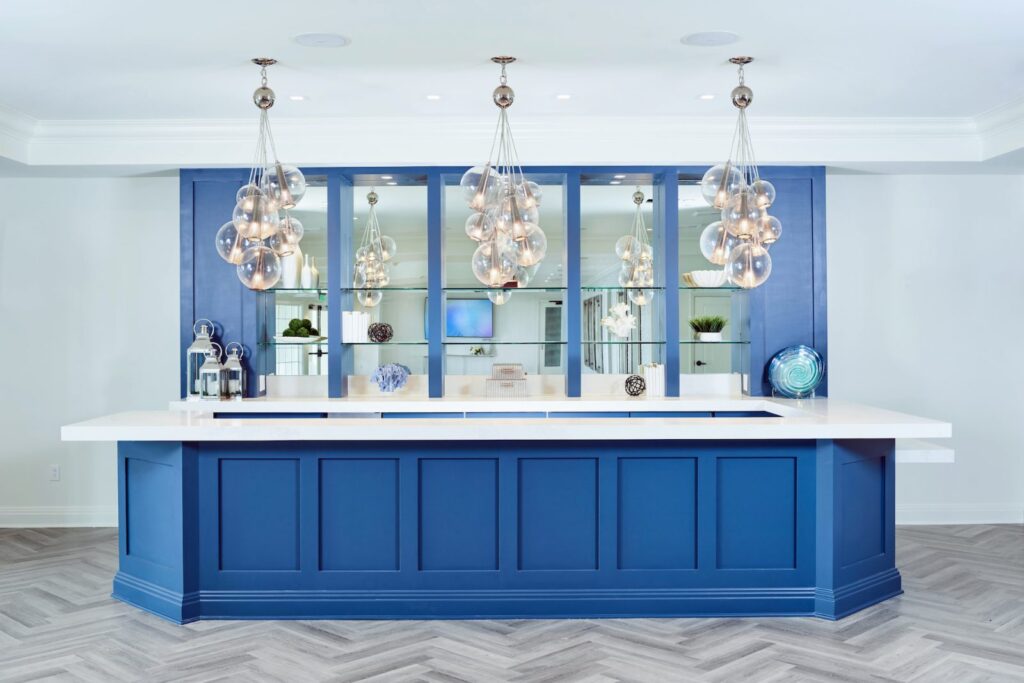
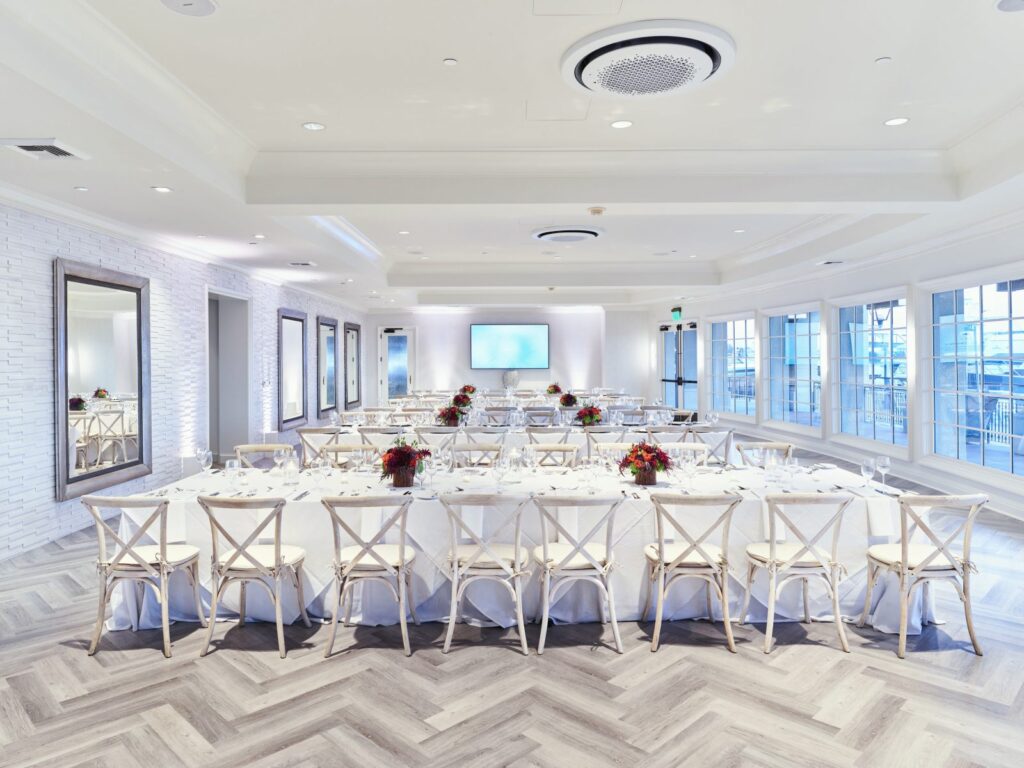
Vinyl flooring has rapidly gained popularity in commercial construction settings due to its exceptional durability, diverse design options, and cost-effectiveness. It is a resilient flooring choice that can withstand heavy foot traffic, making it suitable for retail spaces, healthcare facilities, and educational institutions. The vast array of designs and patterns available in vinyl allows contractors to achieve various looks, from mimicking natural wood or stone to creating unique and eye-catching designs. Additionally, vinyl is known for its easy installation, making it a time-efficient option for commercial projects.
Project Highlight: Summit Sky – Himalayas, featuring a beautiful herringbone pattern, was a strategic choice for the Lighthouse event venue at Balboa Bay Resort. The easy installation of vinyl made it a time-efficient solution, aligning seamlessly with the demands of commercial projects and allowing for a swift transformation of the space into a modern coastal event venue.
Laminate: Budget-Friendly and Stylish
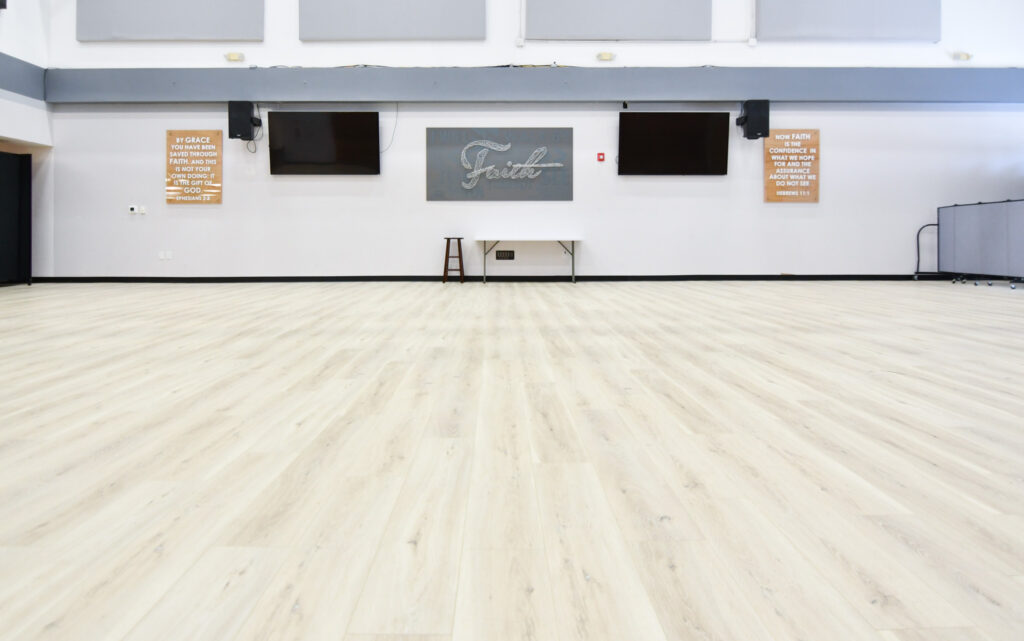
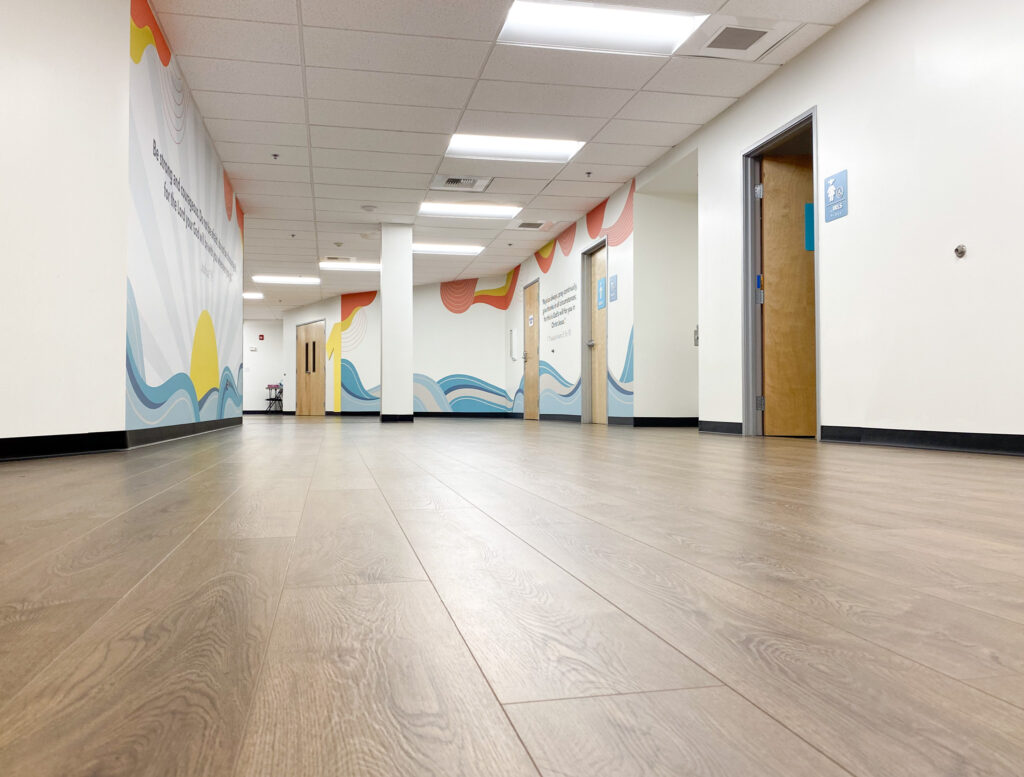
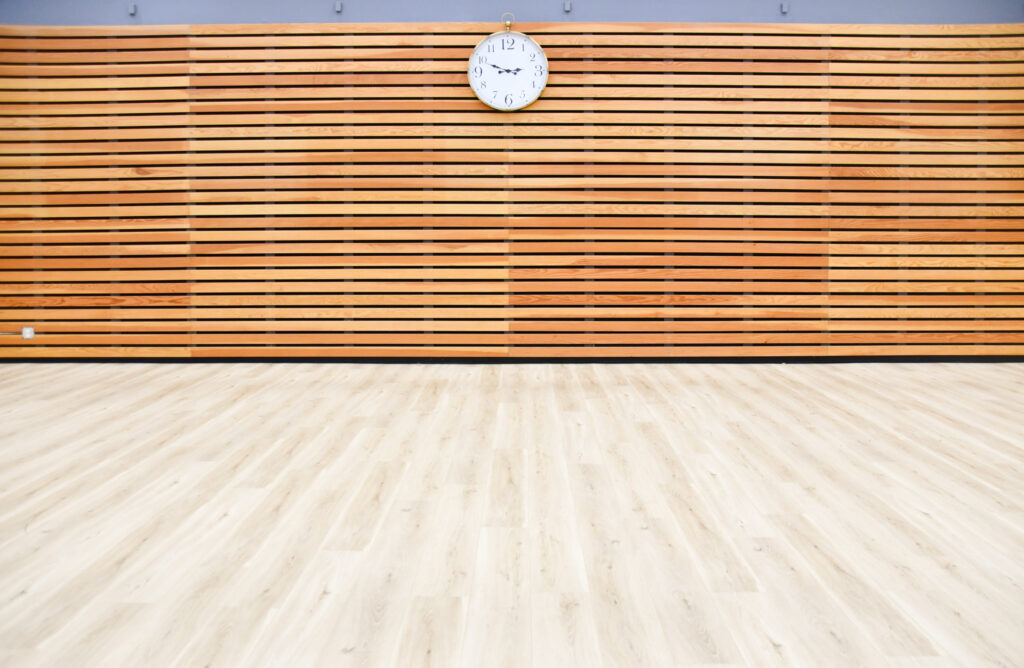
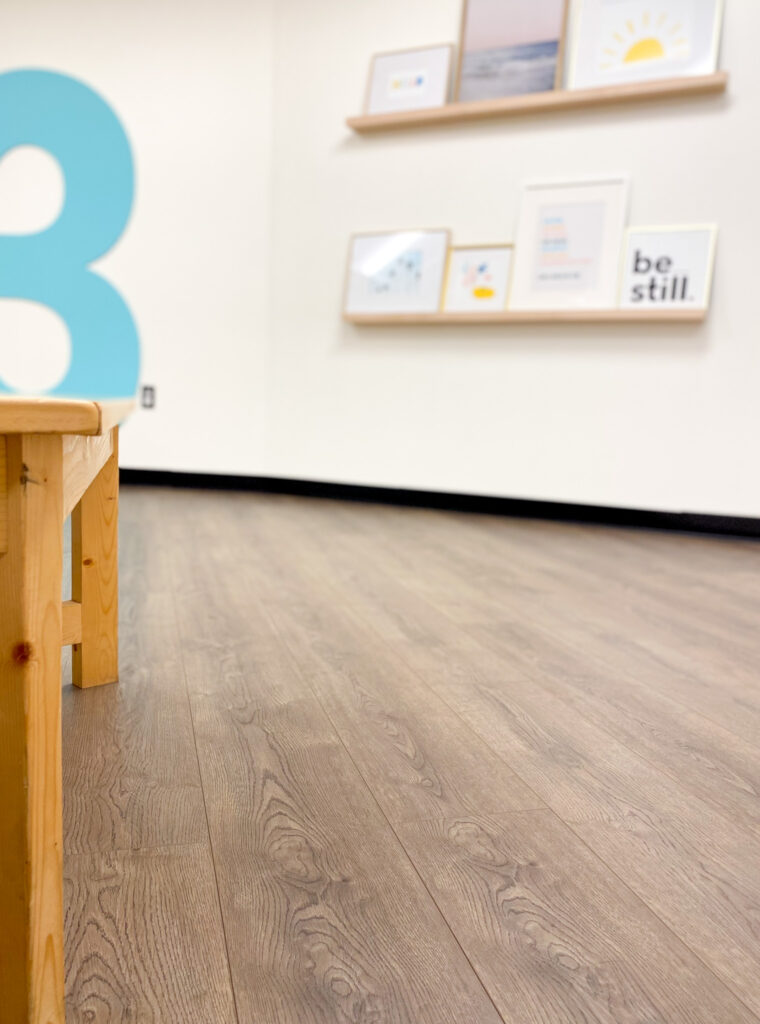
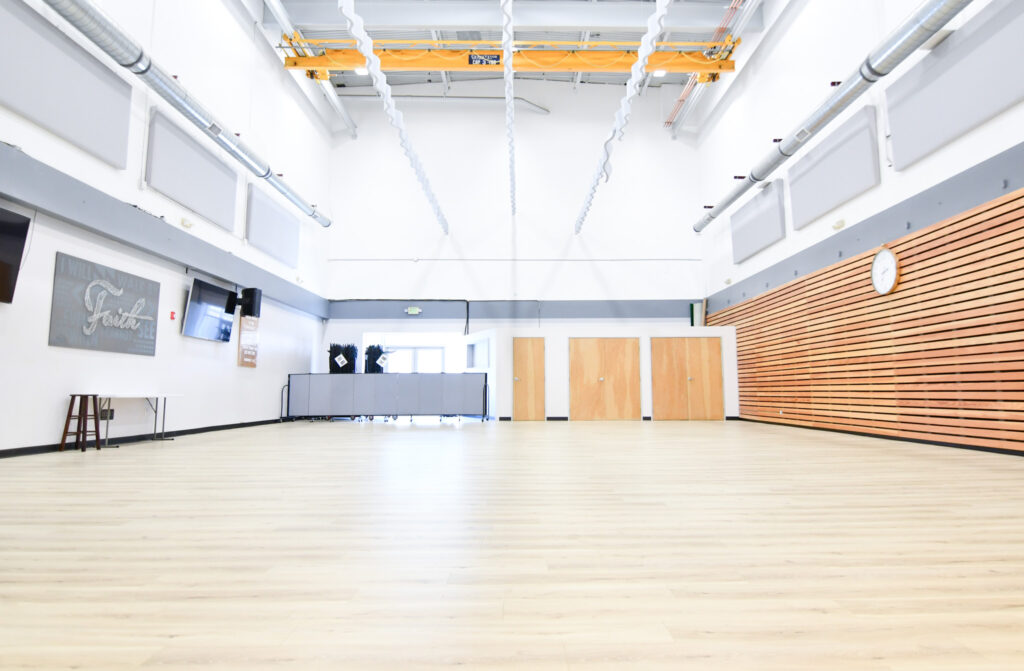
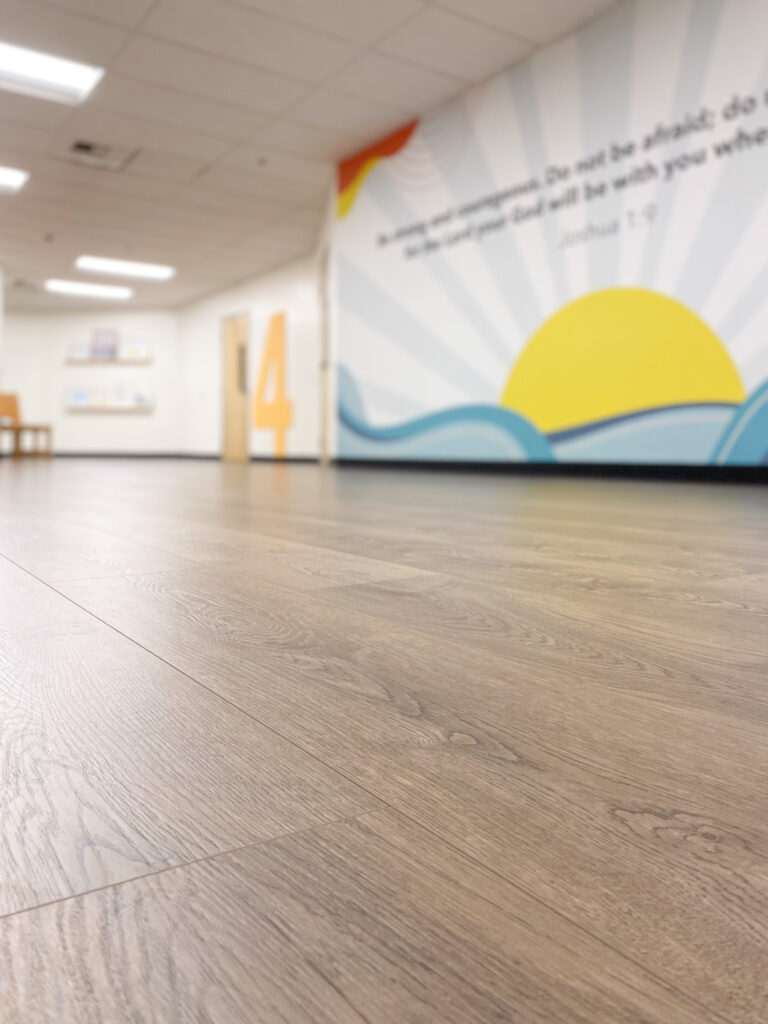
For contractors working within budget constraints without compromising style, laminate flooring is an excellent choice. With its synthetic layers that mimic the look of hardwood, laminate provides an affordable alternative without sacrificing aesthetics. This type of flooring is resistant to scratches, stains, and fading, making it suitable for high-traffic areas such as retail stores, cafes, and community spaces. Its ease of installation and low maintenance requirements make it a practical solution for contractors looking to meet both financial and design objectives.
Project Highlight: At the South Bay Community Church in Los Angeles, our ILLUMIN8 Collection’s Aurora and Glaze Waterproof Laminate flooring was a perfect choice. Resistant to scratches, stains, and fading, it not only enhances the church’s elegance but also ensures durability in high-traffic areas, setting a standard for both style and functionality.
Considerations for Contractors:
- Traffic and Usage Patterns: Assess the anticipated foot traffic and usage patterns in the commercial space to determine the most suitable flooring option.
- Maintenance and Durability: Consider the maintenance requirements and durability of each flooring type to ensure long-term performance.
- Aesthetics and Brand Image: Align the flooring choice with the aesthetics and brand image of the commercial space to create a cohesive and appealing environment.
- Budget Constraints: Evaluate budget constraints and choose a flooring option that meets financial considerations without compromising quality.
Conclusion:
In the world of commercial construction, choosing the right flooring is a critical decision that impacts the overall look, feel, and functionality of a space. Contractors seeking a balance between aesthetics, durability, and cost-effectiveness can turn to engineered hardwood, vinyl, and laminate. By carefully considering factors such as traffic patterns, maintenance requirements, and budget constraints, contractors can ensure that the selected flooring enhances the commercial space and contributes to a positive and lasting impression.
